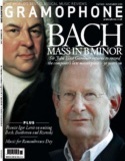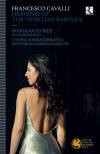Texte paru dans: / Appeared in:
|
|||||||
|
Outil de traduction (Très approximatif) |
|||||||
|
Reviewer: David Vickers
Cavalli composed more than 30
operas for five different Venetian theatres, and most of the scores survive.
Recordings of complete stage works are not exactly rare but constitute a
drop in a very large ocean. Leonardo García Alarcón’s double album ‘Heroines
of the Venetian Baroque’ is a clever chronological narrative that draws
diverse extracts (often very short) from 27 different operas dating between
1639 and 1667, most of them sung by Mariana Flores. Proci’s impassioned
‘Volgi, deh volgi il piede’ from Gli amori di Apollo e Dafne has melodic
leaps, moments of tormented dissonance and reiterated refrains that are
reminiscent of Monteverdi’s famous lament from Arianna (revived during the
same 1640 Carnival season). Interspersed among doleful scenes are lowbrow
comic complaints about Cupid from Egisto (1643), L’Ormindo (1644) and La
Doriclea (1645). Flores’s softer languid singing aptly conveys a nymph’s
erotic longing for the return of her lover Jupiter (La Calisto, 1651).
Isifile’s lament ‘Lassa, che far degg’io?’ in Giasone (1649) is sequenced
next to a vividly dramatic account of her rival Medea’s incantation scene –
the latter sung ardently by mezzo‑soprano Anna Reinhold. The two singers join together in a few dissimilar scenes such as the flamencoinfused depiction of a Spanish battle in La Veremonda (1653). Flores’s depiction of the enraged Juno in Ercole amante (Paris, 1662) is a potent tour de force, whereas the simile imagery of waves is realised beautifully in the gently rolling and overlapping string ritornellos that accompany Giulia’s ‘Come al mar corrono i fiumi’ from Pompeo Magno (1666). The recital’s multi-layered trajectory concludes with a quartet sung by two pairs of reunited lovers at the end of Eliogabalo (1667).
Christina Pluhar and L’Arpeggiata take their recital’s title ‘L’amore innamorato’ from an early lost opera (1642). Up to 10 vivacious continuo pluckers generate lilting energy that transports listeners on an imaginative whistle-stop tour of Cavalli’s operas. Hana BlaΩíková’s nimble diminutions beguile in Harmony’s prologue to L’Ormindo (addressed to the good citizens of La Serenissima), and her plaintive chromatic lines in ‘Affliggetemi, guai dolenti’ from Artemisia (1657) combine superb technique and harmonic intelligence. Calisto’s enraptured ‘Restino imbalsamate’ (the only selection duplicated in both recitals) is charged with erotic languor by Nuria Rial, who elsewhere delivers gleeful humour in Nerillo’s thinly disguised paean to the craziness of Venice (L’Ormindo) and evokes tragic despair in Cassandra’s lament from La Didone (1641).
Almost every number is credited transparently as having been ‘arranged’ by Pluhar, which probably tells the wary purist something about improvisational flights of fancy (Alarcón is not immune to some interventionist touching-up either). Not everyone will relish the fusion cuisine served up by Pluhar’s realisations – ‘Ninfa bella’ from La Calisto turns into an instrumental jam session not far removed from the Latinjazz-rock of the early 1970s band Santana – but the singing is frequently sensational and L’Arpeggiata’s colourful playing conjures alluring fantasy. |
|||||||
|
|
|
||||||
|
Cliquez l'un ou l'autre
bouton pour découvrir bien d'autres critiques de CD |
|||||||





